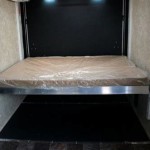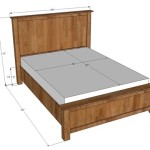Bed Rail Safety Guidelines
Bed rails are commonly used to assist individuals with mobility challenges, preventing falls and providing support while getting in and out of bed. However, improper use or selection of bed rails can pose significant safety risks. Understanding and following appropriate safety guidelines is crucial to ensuring the safe and effective use of bed rails.
The primary safety concern with bed rails is entrapment. This occurs when a person becomes trapped between the mattress and the bed rail, the bed rail and the wall, or within the components of the rail itself. Entrapment can lead to serious injuries, including suffocation, strangulation, and fractures. Other hazards associated with improper bed rail use include falls, bruising, and skin abrasions.
Careful assessment of the individual's needs and physical condition is the first step in ensuring bed rail safety. A healthcare professional, such as a physician, occupational therapist, or physical therapist, should conduct a thorough evaluation. This assessment should consider the individual's mobility, cognitive abilities, medical conditions, and overall risk of falls.
Selecting the appropriate type of bed rail is essential. Various bed rail designs exist, each with its own advantages and disadvantages. Half-length rails, which extend only a portion of the bed's length, offer some fall protection while allowing easier entry and exit. Full-length rails provide more extensive protection but can restrict movement. Adjustable height rails allow customization based on individual needs. It is crucial to choose a bed rail that is compatible with the bed frame and mattress size to prevent gaps and instability.
Proper installation of bed rails is paramount to safety. Follow the manufacturer's instructions carefully to ensure secure attachment to the bed frame. Regularly inspect the bed rails for any signs of looseness, damage, or wear. Tighten bolts and replace any damaged components immediately to prevent accidents.
The mattress should fit snugly against the bed rail, leaving no gaps large enough for entrapment. Avoid using overly thick or thin mattresses that might compromise the effectiveness of the bed rail. Regularly check the mattress position and adjust as needed to maintain a secure fit.
Educating the individual using the bed rail, as well as caregivers, is crucial. Explain the purpose of the bed rail and how to use it safely. Emphasize the importance of avoiding attempts to climb over the rail. For individuals with cognitive impairment, consider additional safety measures such as bed alarms or constant supervision.
Regular monitoring and reassessment of the individual's needs and the effectiveness of the bed rail are essential. Changes in physical condition, medication, or cognitive abilities can impact the suitability of the bed rail. Healthcare professionals should periodically re-evaluate the need for the bed rail and adjust the type or configuration as necessary.
Specific safety standards and regulations govern the design and manufacture of bed rails. In the United States, the Food and Drug Administration (FDA) has issued guidance on bed rail safety, emphasizing the importance of entrapment prevention. Consulting these guidelines can provide valuable information when selecting and using bed rails.
Several organizations offer resources and information on bed rail safety. The Consumer Product Safety Commission (CPSC) provides safety tips and recall information. Organizations specializing in elder care or disability services can also offer valuable guidance.
Considering alternative solutions to bed rails is also important. For some individuals, less restrictive options, such as lowering the bed height, using floor mats, or implementing bed alarms, might provide adequate fall prevention without the risks associated with bed rails.
Proper mattress selection and maintenance are essential for bed rail safety. A firm, supportive mattress can help prevent the mattress from sagging or shifting, which can create gaps and increase entrapment risks. Rotating and flipping the mattress regularly, according to the manufacturer’s instructions, can help maintain its shape and support.
The bed environment itself plays a role in safety. Ensure adequate lighting to facilitate movement and minimize disorientation. Keep the area around the bed free of clutter to prevent tripping hazards. Address any potential hazards, such as loose rugs or electrical cords, that might contribute to falls.
Individuals using bed rails should wear appropriate clothing. Avoid loose clothing or nightwear that could become entangled in the bed rail's components. Consider using sleepwear specifically designed for individuals with mobility limitations.
Open communication between the individual, caregivers, and healthcare professionals is vital. Encourage individuals to report any discomfort, difficulties, or concerns related to the bed rail. Caregivers should be vigilant in observing for any signs of potential problems and communicating them promptly to the healthcare team.
By understanding and adhering to these bed rail safety guidelines, individuals and caregivers can significantly reduce the risks associated with bed rail use and promote a safer sleeping environment.
Are Your Hospital Bed Rails Compliant With Entrapment Guidelines Sfi Medical Equipment Solutions
Protect Your Residents From Bed Entrapment Direct Supply
Bureau Of Human Services Licensing
Danger Zones In The Bed Safety Alimed
Entrapment Prevention Guidelines
Bed Guardrail For Baby At Staranddaisy Guardrails Infants
Gui For Industry And Fda Staff Hospital Bed System Dimensional Assessment To Reduce Entrapment
Safety Concerns About Portable Bed Rails Fda
Safety Of Bunk Beds
Baby And Toddler Bed Rail Transition From Crib To Or Cosleep Safely







